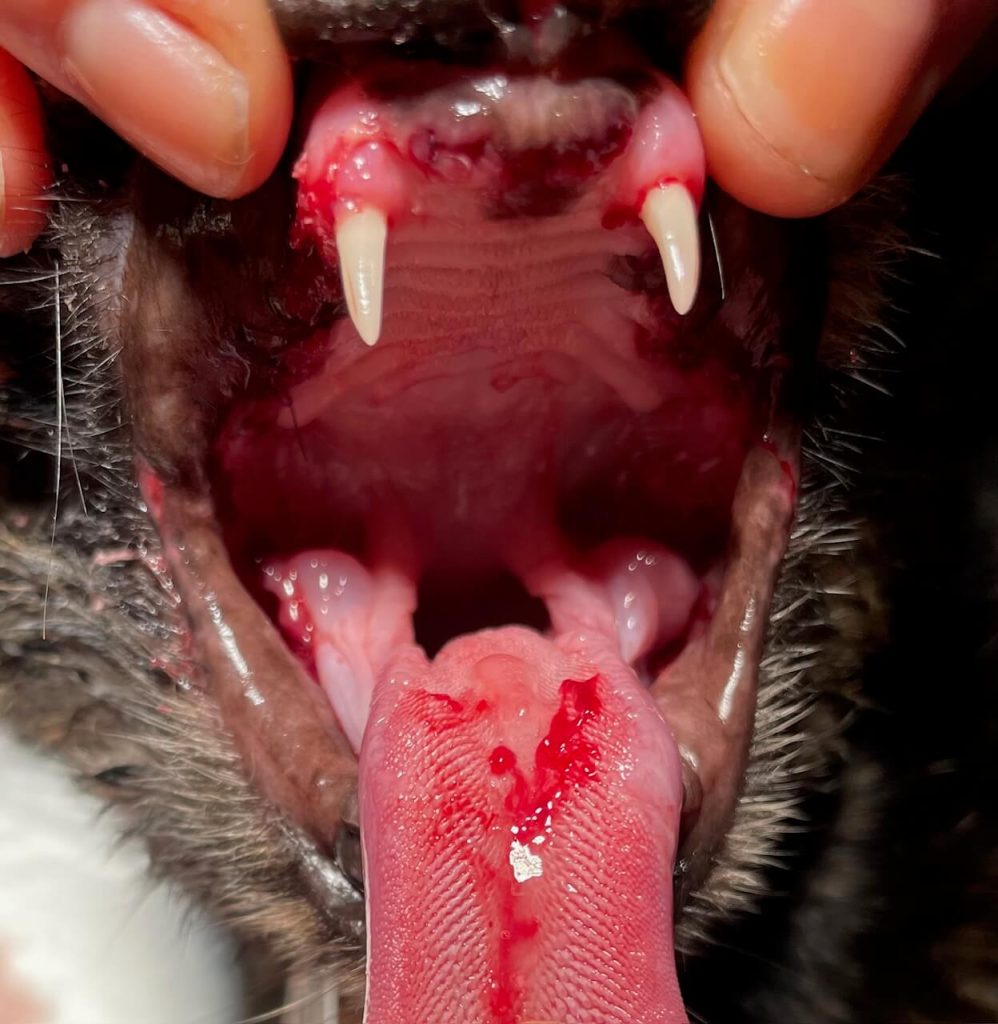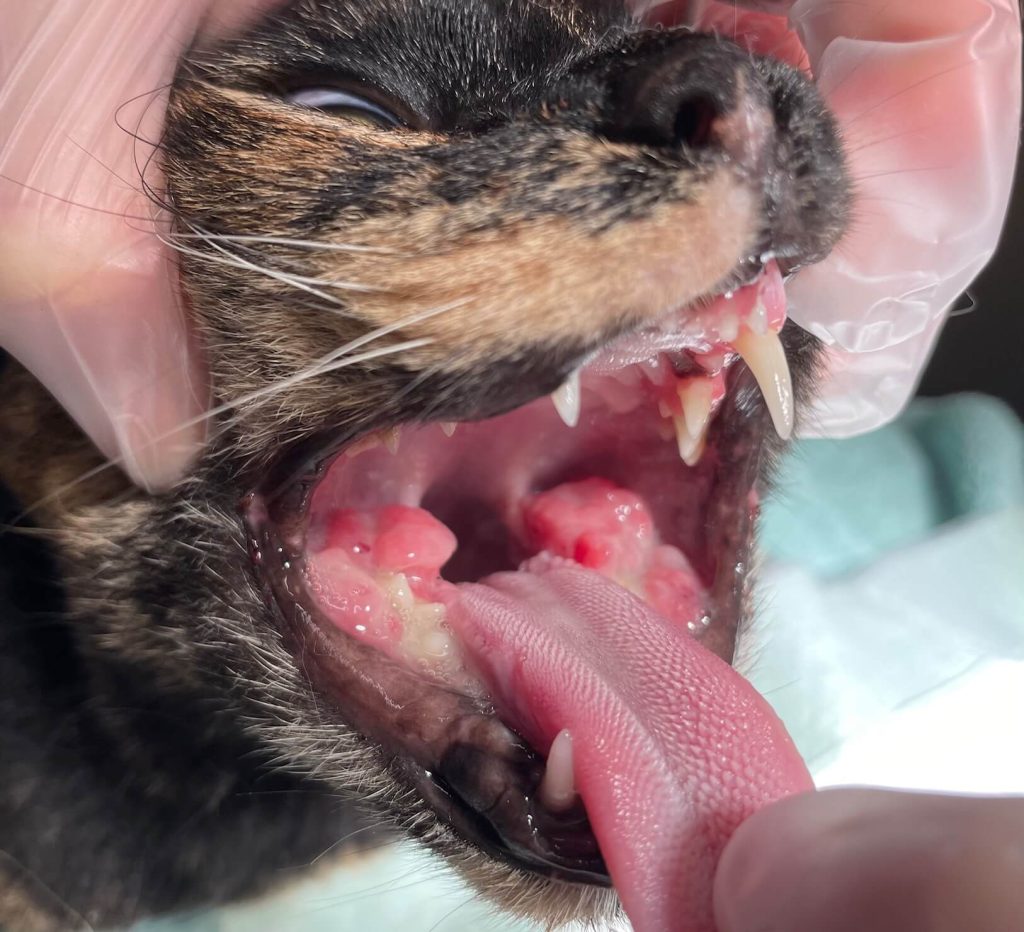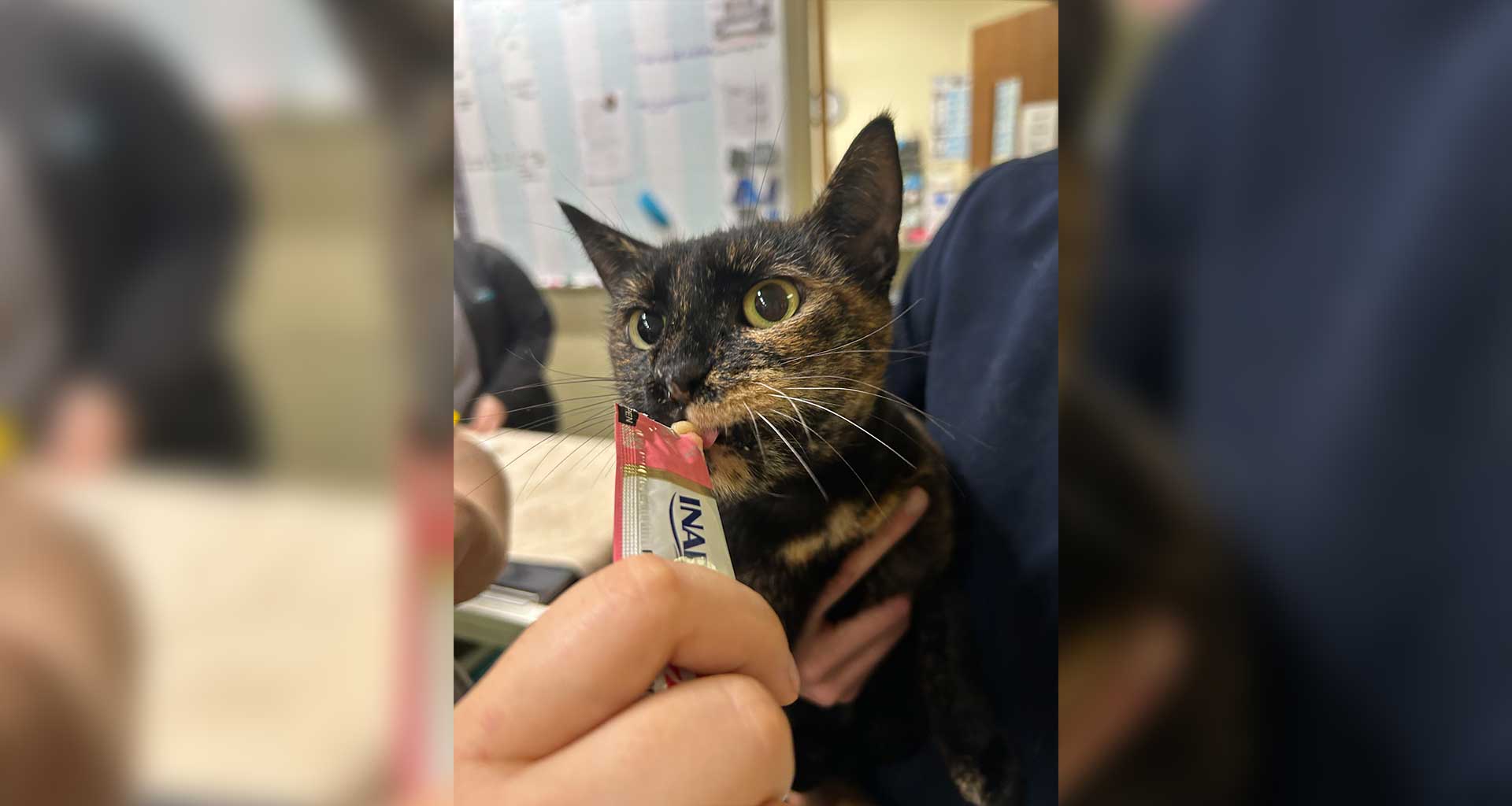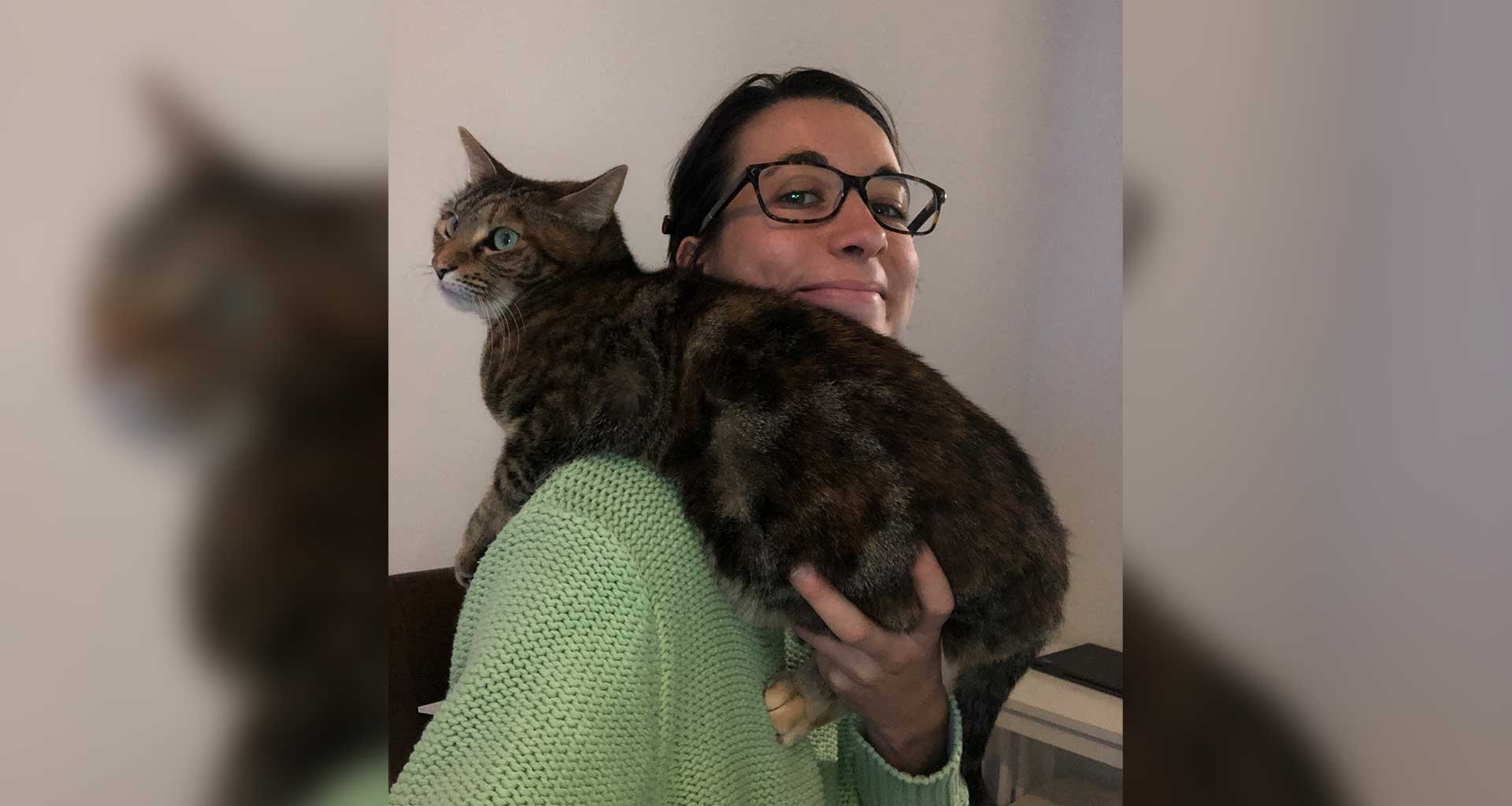Sweet Ginny is a 4 year old domestic shorthair who had a rough start in life and was fortunately adopted by one of our clinic’s previous employees when she was around a year old. Her owner recently brought her to see Dr Aoife for a general check up as she had noticed that Ginny was having trouble eating her dry food. Dr Aoife checked her out and diagnosed Ginny with severe gingivostomatitis – inflammation of the gingiva (gums) and oral cavity. In cats, stomatitis (inflammation of the mucous membranes of the mouth) is strongly associated with a number of viral infections including feline immunodeficiency virus, feline leukaemia virus, feline calicivirus and feline herpes virus.
In general, cats with oral pain can present with signs including inappetence, weight loss, pawing at the face, or dropping food. Owners may also notice blood in their pet’s saliva, swelling around the face or behavioural changes such as hiding more.
Dr Aoife performed a blood test on Ginny to help identify concurrent or contributory diseases. The results indicated her neutrophils (a type of white blood cell involved in inflammation) was high but she was FIV negative. Due to the severity of disease, Dr Aoife also booked her in for a COHAT (comprehensive oral health assessment and treatment) and started her on some pain relief and antibiotics to cover for secondary infection until the scheduled procedure.
Dr Vic, who has a keen interest in feline medicine and surgery, undertook Ginny’s COHAT. COHAT procedures are performed under general anaesthetic to enable us to perform a thorough examination, a complete set of x-rays and removal of plaque from the teeth’s surfaces and below the gumline. Probing the teeth and x-rays revealed advanced periodontal disease. Disease was so advanced that Ginny required extraction of almost all of her teeth except her four canines (fang teeth).
Dr Vic also took a number of samples including a biopsy specimen as well as a deep throat swab to test for viruses including feline herpes and calicivirus. It was decided to hold the biopsy specimen with the view to send off over the next few months if symptoms fail to improve. The biopsy could help to rule out other causes of oral inflammation or any type of cancerous growth. The viral swab confirmed the presence of calicivirus. Calicivirus is often implicated in feline chronic gingivostomatitis and disease is thought to be a result of an aberrant or deviant immune response to immune stimulation from the virus. This causes a systemic (body-wide) inflammatory disease.
Although it may seem quite extreme, in most cases, partial or full mouth extractions are the recommended treatment. Medical treatment is also used sometimes but response rates are often poor or incomplete. Extraction of the teeth removes the source of immune stimulation and facilitates viral clearance. A substantial or complete improvement is expected in 70-80% of cats. A proportion of cats will suffer from refractory disease and continue to exhibit inflammation in the back of their mouth and throats necessitating ongoing medical treatment.
Ginny did really well after surgery and within a few days was eating really well and her usual smoochy self. Dr Vic saw her again two weeks after the procedure. Ginny’s mouth had healed well and repeat blood tests revealed improvement of her white blood cell count. Over the next few months, Dr Vic will continue to monitor Ginny’s canine teeth and oral health for any signs of recurrent or persistent disease which may need addressing.

Ginny before treatment

Ginny after Treatment


